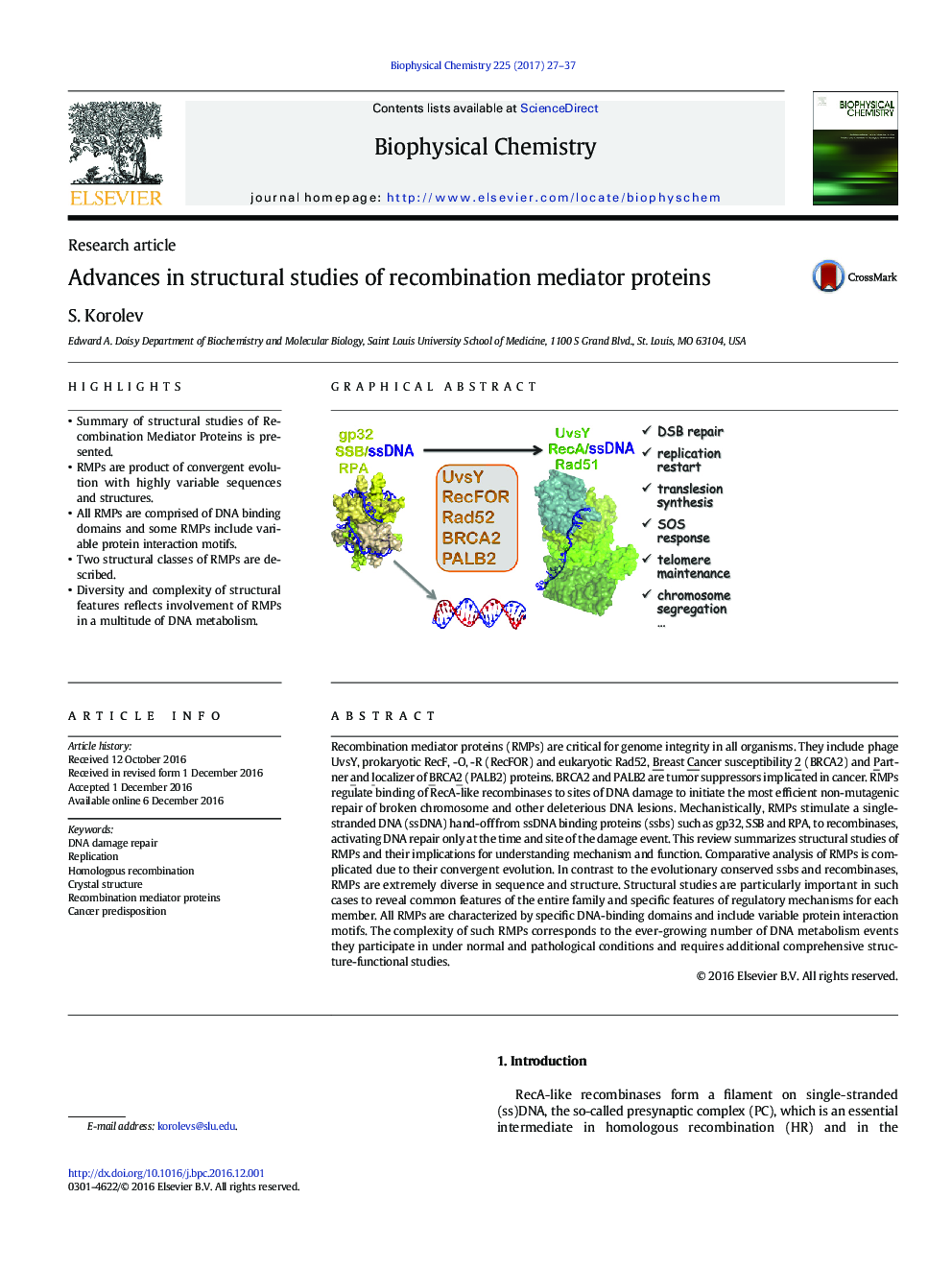| کد مقاله | کد نشریه | سال انتشار | مقاله انگلیسی | نسخه تمام متن |
|---|---|---|---|---|
| 5370664 | 1503895 | 2017 | 11 صفحه PDF | دانلود رایگان |
• Summary of structural studies of Recombination Mediator Proteins is presented.
• RMPs are product of convergent evolution with highly variable sequences and structures.
• All RMPs are comprised of DNA binding domains and some RMPs include variable protein interaction motifs.
• Two structural classes of RMPs are described.
• Diversity and complexity of structural features reflects involvement of RMPs in a multitude of DNA metabolism.
Recombination mediator proteins (RMPs) are critical for genome integrity in all organisms. They include phage UvsY, prokaryotic RecF, -O, -R (RecFOR) and eukaryotic Rad52, Breast Cancer susceptibility 2 (BRCA2) and Partner and localizer of BRCA2 (PALB2) proteins. BRCA2 and PALB2 are tumor suppressors implicated in cancer. RMPs regulate binding of RecA-like recombinases to sites of DNA damage to initiate the most efficient non-mutagenic repair of broken chromosome and other deleterious DNA lesions. Mechanistically, RMPs stimulate a single-stranded DNA (ssDNA) hand-off from ssDNA binding proteins (ssbs) such as gp32, SSB and RPA, to recombinases, activating DNA repair only at the time and site of the damage event. This review summarizes structural studies of RMPs and their implications for understanding mechanism and function. Comparative analysis of RMPs is complicated due to their convergent evolution. In contrast to the evolutionary conserved ssbs and recombinases, RMPs are extremely diverse in sequence and structure. Structural studies are particularly important in such cases to reveal common features of the entire family and specific features of regulatory mechanisms for each member. All RMPs are characterized by specific DNA-binding domains and include variable protein interaction motifs. The complexity of such RMPs corresponds to the ever-growing number of DNA metabolism events they participate in under normal and pathological conditions and requires additional comprehensive structure-functional studies.
Figure optionsDownload high-quality image (309 K)Download as PowerPoint slide
Journal: Biophysical Chemistry - Volume 225, June 2017, Pages 27–37
